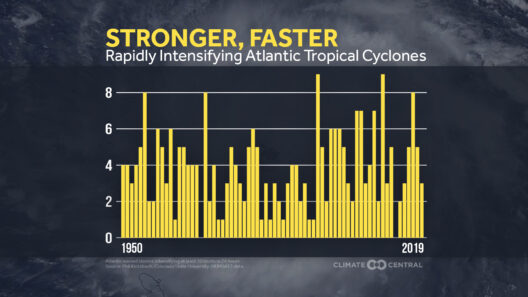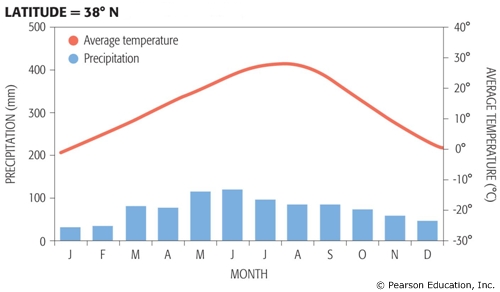Forests are often lauded as the lungs of our planet, providing essential ecological services that contribute significantly to the regulation of Earth’s climate. They are critical in mitigating climate change, serving as a natural buffer against the increasing levels of greenhouse gases in the atmosphere. This multifaceted relationship between forests and climate regulation lies in several key functionalities that warrant deeper exploration.
First and foremost, forests act as carbon sinks, sequestering carbon dioxide (CO2) from the atmosphere. Through the process of photosynthesis, trees absorb CO2, transforming it into biomass, which includes their foliage, branches, trunks, and roots. Estimates suggest that forests absorb about 2.6 billion metric tons of carbon annually. This immense capacity helps counterbalance anthropogenic emissions, thus playing a pivotal role in the global carbon cycle. Interestingly, certain species of trees—such as the fast-growing poplar and bamboo—can sequester carbon at exceptionally high rates, further underscoring the importance of biodiversity in forest ecosystems.
Moreover, forests mitigate climate change by influencing local and regional climates through evapotranspiration. When trees transpire water from their leaves, it not only cools the surrounding air but also contributes to cloud formation and precipitation patterns. This process stabilizes local climates, encouraging more consistent rainfall and reducing the risks of drought. In arid regions, afforestation can lead to substantial increases in rainfall, thereby enhancing agricultural productivity and food security. Such ecological dynamics demonstrate the interlinked nature of climate regulation and forest health.
On a broader scale, forests help maintain the hydrological cycle by regulating water flow and improving water quality. Healthy forest ecosystems can absorb and filter rainwater, reducing runoff and minimizing soil erosion. This filtration process protects watersheds, making freshwater resources cleaner and more reliable. Furthermore, forested areas are crucial in preventing flooding by absorbing excess rainfall and slowly releasing it into streams and rivers. As climate change exacerbates extreme weather events, the role of forests in protecting water resources becomes increasingly critical.
Furthermore, forests support biodiversity, housing nearly 80% of terrestrial species. This biodiversity is not merely a matter of aesthetics; it contributes to ecosystem resilience in the face of climate change. Diverse ecosystems are more adaptable to changes and disturbances, such as disease, pests, and extreme weather events. The loss of biodiversity, conversely, diminishes this resilience, making ecosystems more vulnerable to the impacts of climate change. Thus, preserving forests is essential not only for their carbon sequestration capabilities but also for maintaining the complex relationships between countless species that contribute to ecological stability.
Moreover, deforestation and forest degradation are significant sources of greenhouse gas emissions. According to estimates by environmental organizations, deforestation accounts for approximately 10–15% of global emissions. When trees are cut down or burned, the carbon stored in their biomass is released back into the atmosphere, exacerbating climate change. Sustainable management practices, such as selective logging and agroforestry, can mitigate these emissions while providing economic benefits to local communities. Such practices offer a way to balance the need for economic development with environmental sustainability.
Reforestation and afforestation are effective strategies for amplifying the mitigation effects of forests. By replanting trees in deforested areas or planting new forests in non-forested regions, we can enhance carbon sequestration, restore biodiversity, and rejuvenate degraded ecosystems. Large-scale reforestation efforts, such as the Bonn Challenge, aim to restore 350 million hectares of deforested land by 2030. Demonstrating global commitment to these initiatives is paramount, and they rely heavily on community engagement and participation to succeed.
In urban environments, the incorporation of urban forestry plays a crucial role in climate change mitigation. Urban forests offer myriad benefits: they improve air quality, reduce urban heat islands, and sequester carbon. Strategically planting and maintaining trees in cities can significantly enhance urban resiliency against climate impacts. By fostering green spaces, cities can promote public health, reduce energy consumption, and enhance the quality of life for residents, all while providing substantial environmental benefits.
Nevertheless, the interplay between forests and climate change is neither simple nor linear. The impacts of climate change on forests also deserve attention. Increasing temperatures, altered precipitation patterns, and the prevalence of invasive species threaten forest ecosystems worldwide. These changes can lead to forest decline, increased susceptibility to wildfires, and shifts in species composition. Adaptation strategies that enhance the resilience of forest ecosystems are critical in this context. Such strategies may include diversified planting, protecting ecosystems from pests, and improving forest management practices.
In conclusion, forests are indispensable allies in the fight against climate change. Their role as carbon sinks, regulators of the hydrological cycle, and bastions of biodiversity underscores their ecological significance. However, the threats posed by climate change necessitate proactive management and conservation efforts. Only through the concerted efforts of individuals, communities, and governments can we safeguard forests and harness their full potential in mitigating climate change. Protecting and restoring our forests is not merely an environmental imperative; it is a fundamental necessity for the health of our planet and future generations. The time to act is now; our forests are waiting.






